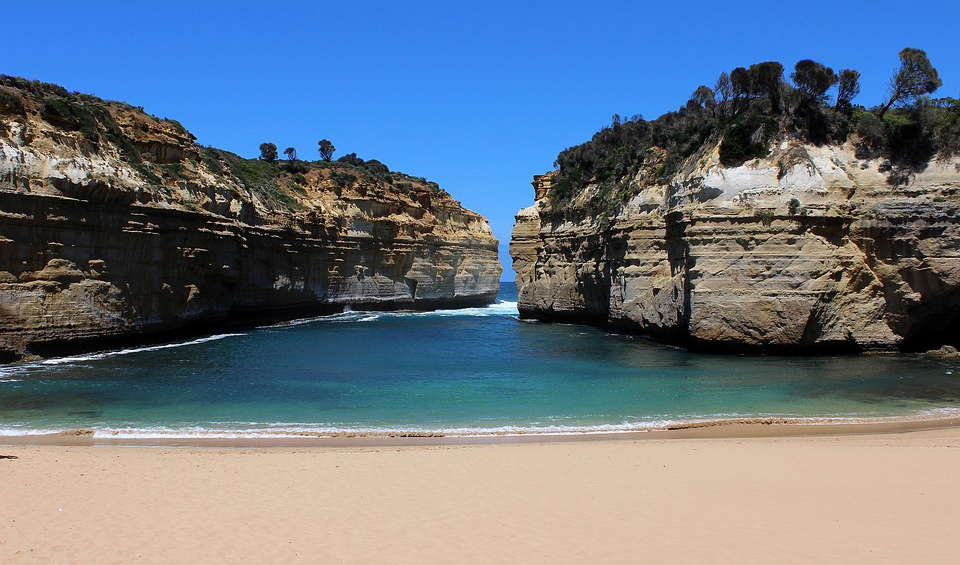
The Science Behind the Tides
Wednesday 24th May 2017 8:37 am
There are about 120 different possible tides each day. There are tides that happen once a day, twice a day, three times a day, four times a day, and so on.

Pictured: Beach Cove, The Great Ocean Rd, VIC. “The gravitational forces of our moving Moon and the Sun attract Earth’s oceans and suck them into corresponding watery bulge”. IMAGE CREDIT: Pixabay
THE TOWN OF Karumba – at the Gulf of Carpentaria’s bottom right-hand corner – experiences only one high tide and one low tide each day.
What’s going on?
The gravitational forces of our moving Moon and the Sun attract Earth’s oceans and suck them into corresponding watery bulges. The normal rotation of our planet brings any point on Earth’s surface towards, under, and then away from these bulging walls of water. This gives the impression of tides – the ocean rising and falling.
But the situation is actually more complicated. The Moon doesn’t orbit directly above the Equator, but instead swings above and below it. The oceans have different depths, continents have odd shapes and get in the way of the bulging water. The Earth is tilted some 23° from the vertical; the Earth spins every 24 hours while the Moon takes a month to loop around our Earth; water is slowed by friction as it moves across the ocean floor – and there are a lot more confounding issues.
When you factor all this in to the equations, you get about 120 different possible tides each day. There are tides that happen once a day, twice a day, three times a day, four times a day, and so on. But the twice-a-day tides, which have the biggest energy and height, are most common.
In the Gulf of Carpentaria, most of the tidal energy comes from the Indian Ocean. Hardly any gets through the little 150km gap between Cape York and New Guinea. So the Gulf is virtually a closed body of water.
It takes 12 hours for a water wave to slosh across the Gulf of Carpentaria from east to west – and another 12 hours to bounce off and come back. This 12-hour period is (coincidentally) the same as the time between two high tides (or two low tides). In the Gulf, the incoming tides ‘cancel out’ the outgoing tides, so there are no twice-per-day tides.
Now, the next most energetic tides are the once-a-day tides. And that’s why you have only one tide a day at Karumba. A single tide each day happens for exactly the same reason in the Gulf of Thailand, the Persian Gulf and the Gulf of Mexico.
© 2026 Karl S. Kruszelnicki Pty Ltd


Comments